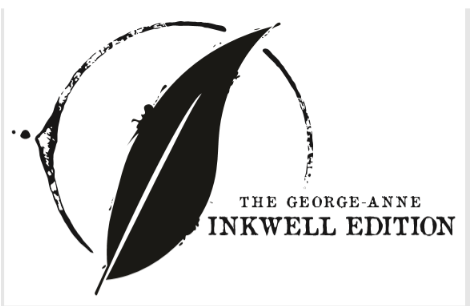Books to Read Over the Upcoming Winter Break
I like to avoid the term reading for pleasure whenever possible, as I find pleasure in reading mandated course material literature as much as anything else. But, generally, when people say reading for pleasure they mean reading for no reason other than because they would like to, when there is no grade attached to it and it will do nothing to directly, immediately advance them in any game of statistics as assignments towards GPAs will.
Now, I have a particular love for syllabus readings, and there is no shortage of tremendous discoveries to be found in engaging with them, such as a love for types of literature that will lead you in the direction of what you may like to read in your free time.
But as we are coming upon a substantial stretch of free time, it occurs to me that it has been months since I have read a good novel simply because I wanted to read a good novel, and I am certain I am not the only one.
This being the case, what better time to formulate a list of simply-for-pleasure reads to cozy up with over the winter break?
Books come in all shapes and sizes, and there is something for everyone: from stimulating, thought-provoking studies in human nature to wild adventures in cities and wardrobes alike—from happy-ending romances to occult deals of the soul—there is nothing better to fill the quiet moments of winter than a good book and a warm drink, a window, a fire, or any of your own holiday season comforts.
Without further ado, here are nine books—in no particular order—which I can ardently recommend spending your quiet time with over the break.
1: Catcher in the Rye, J.D Salinger
If you are looking for a book that manages to both be an easy read and masterfully carry an enormous weight–something that makes you feel and pulls your heartstrings but breezes by in difficulty and reading time–this is the book.
The vote is split on the likability of Holden Caulfield, the protagonist. Insufferable, spoiled brat? Sympathetic, troubled, heartfelt young man? You decide.
This book has the bonus of a Christmas setting—accompany Holden on his three-day New York City misadventure on the cusp of the holiday, a narrative filled with questions, ponderings, nicotine, familiar faces, strangers, and a general tumult of boyish youth while he avoids going home and facing his parents after being kicked out of school—and then love him, or hate him.
“And I have one of those very loud, stupid laughs. I mean if I ever sat behind myself in a movie or something, I’d probably lean over and tell myself to please shut up.”
— J.D Salinger, Catcher in the Rye
2: Mansfield Park, Jane Austen
This is something of the ugly redheaded stepchild of Austen novels, generally the least favorite of Austen lovers. Personally, it is one of my favorites.
Another novel with a vote-splitting protagonist, Fanny Price is no outspoken, feisty Elizabeth Bennet; she is a quiet, thoughtful young woman with a strong but concealed inner world who is taken advantage of by her rich family members, reminiscent of a Cinderella.
This book was the only of Austen’s novels that her mother did not like because Jane Austen was in an engagement situation (given an advantageous marriage proposal and turning it down for lack of love) much like one that appears in this novel, and it caused the same sort of stir in Austen’s family as it did in Fanny Price’s.
If you have read any Jane Austen you know the relative difficulty of her writing style as a reader, but it is a delightful experience that I highly recommend if you are looking for a slight challenge, moderate length, and a typical Jane Austen all’s-well happy ending.
“I was quiet, but I was not blind.”
–Jane Austen, Mansfield Park
“We have all a better guide in ourselves if we would attend to it than any other person can be.”
–Jane Austen, Mansfield Park
3: Ella Minnow Pea, Mark Dunn
A remarkably unique epistolary novel, or a novel in letters–in itself a play on words, which the novel is full of.
This book follows a curious, fictional island town, Nollop, whose government reveres a sign up in town which displays a sentence: The quick brown fox jumps over the lazy dog. This is a famous pangram or a sentence which uses every letter in the alphabet at least once.
The reverence for this sentence and the man who created it is so intense that when a letter falls off the sign, the government determines to outlaw the letter. The letters keep falling off, and more letters are gradually outlawed, and the reader watches as the language of the people in Nollop becomes more and more restricted through their letters to each other as the story progresses.
Let’s say the letters ‘a’ ‘n’ and ‘w’ were just outlawed at Georgia Southern; I discover myself freshly limited to composing simple phrases. It is a fascinating, entertaining study of wordplay, linguistics, and censure, and it is a quick read with a good, solid ending.
“There is indeed power in words. Most of the lasting change that has been forged in the history of this world came not from a wielding of the swift and bloody sword of battle but from the shaping scalpel of ideas, and what are ideas without the words to deliver them?”
–Mark Dunn, Ella Minnow Pea
4: Three Dashes Bitters, Jack Simmons
You may recognize this author’s name as one of our philosophy professors on the Armstrong campus.
Three Dashes Bitters is something of a boozy New Orleans twist on the regency-style leisure class story–Follow Timothy Schmidt as he stumbles through a thoroughly disorienting couple of days back home for Christmas from Boston and struggles with love, relatives, trashy cars, friendship, existentialism, and hangovers.
The book includes recipes for cocktails that I recommend you try (if you are of drinking age, of course) such as milk punch, which is kind of a bourbon latte for lack of a more apt description, which I have tried, and thoroughly enjoyed. (Hint: if you don’t want the milk to curdle in the alcohol, try non-dairy milk. I used oat.)
“This is the secret of despair–that it confronts absurdity and attempts to negotiate with it. German and French philosophers had written countless chapters trying to explain the obscure nature of despair, but had they been sports enthusiasts, they might have come to the crux of the matter more easily.”
–Jack Simmons, Three Dashes Bitters
5: Middlemarch, George Eliot
George Eliot, a pen name for Mary Ann Evans, is a big name in the Victorian era of literature. Her Middlemarch is by no means an easy read, almost a thousand pages long.
I read it in about a week and a half in the spring, and while it can certainly be a taxing experience, it is wholly rewarding. Middlemarch is the intricately interwoven story of the lives of a considerably large group of people in the titular town, following scandals, marriages, deaths, money troubles, disapproved loves, and in short, all the things that come together and form life. There is a bounty of moving pieces to keep track of, and every character has a rich, staggeringly distinct life and personality—it is a real marvel to see how they come together, grow apart, interact, and develop into altered people, as real people do, and to witness the great feat Eliot accomplishes in keeping it all together as if it were a real town simply being recorded in all its intricacies.
“..for the growing good of the world is partly dependent on unhistoric acts; and that things are not so ill with you and me as they might have been, is half owing to the number who lived faithfully a hidden life, and rest in unvisited tombs.”
–George Eliot, Middlemarch
6: Chronicles of Narnia, C.S Lewis
I loved these books when I was a kid—I had an old paperback copy of the whole series and I read it over and over until it completely fell apart.
I can’t recommend anything other than The Lion, the Witch, and the Wardrobe to start out with, but I remember loving Voyage of the Dawn Treader. There is a coming of Christ allegory to be found in The Lion, the Witch, and the Wardrobe, and paired with its whimsical winter setting, it is the perfect book to curl up by a fire with and fall into a land of hidden-away childhood adventure, just in time for Christmas.
“They were pretty tired by now of course; but not what I’d call bitterly tired – only slow and feeling very dreamy and tired as one does when one is coming to the end of a long day in the open.”
–C.S Lewis, The Lion, the Witch, and the Wardrobe
7: The Picture of Dorian Gray, Oscar Wilde
The Picture of Dorian Gray starts off strong with its infamous preface which acts as a manifesto of aestheticism, the idea that art should exist for art’s own sake.
In this, the only novel ever written by Irish/English playwright Oscar Wilde, an impossibly beautiful young man at the peak of youth and beauty becomes aware of his beauty and youth upon seeing a portrait of himself and becomes so afraid of losing his bloom that his will forges a trade of his soul to preserve it. What follows is a philosophical, somewhat amoral masterpiece, a study of indulgence and sin.
“We can forgive a man for making a useful thing as long as he does not admire it. The only excuse for making a useless thing is that one admires it intensely. All art is quite useless.”
–Oscar Wilde, the preface to The Picture of Dorian Gray
8: And Then There Were None, Agatha Christie
If you like horror movies and murder mysteries, you’ll love And Then There Were None. A genuinely disorienting and unsettling classic murder mystery by Agatha Christie.
My copy of this book begins with a note by the author from her autobiography: “I had written this book because it was so difficult to do that the idea had fascinated me…it was well received and reviewed, but the person who was really pleased with it was myself, for I knew better than any critic how difficult it had been.”
Ten people come to a manor on an island under mysterious and puzzlingly differing circumstances, all unclear on who their host is. Quickly the scene dissolves into chaos following the course of a poem, and the ten guests come to the horrifying realization that the killer must be one of them.
This is a quick read—I got through it in an afternoon—and it is an elusive, masterfully written thrill.
“When the sea goes down, there will come from the mainland boats and men. And they will find ten dead bodies and an unsolved problem on Indian Island.”
–Agatha Christie, And Then There Were None
9: A Separate Peace, John Knowles
This book is one of my all-time favorites if it does not hold the top position; heart wrenching, messy, and painfully intimate, John Knowles’ stunner follows Gene Forrester and his turbulent relationship with his roommate and best friend, Phineas, during a short period of their teenage time at boarding school in New England during World War II.
If you feel like crying, this is the one. Best friend, rival, roommate, victim, inseverable piece of oneself: this book is a haunting exploration of the intensity of an intimate friendship through the eyes of an unreliable narrator: a distrusting, bitter, angry sixteen-year-old boy, and how he tries to wrap his mind around the reality of Phineas, the shining, golden, charismatic, gifted optimist that is his closest and most loyal companion in the world.
“It was hard to remember in the heavy and sensual clarity of these mornings; I forgot whom I hated and who hated me. I wanted to break out crying from stabs of hopeless joy, or intolerable promise, or because these mornings were too full of beauty for me because I knew of too much hate to be contained in a world like this.”
–John Knowles, A Separate Peace










